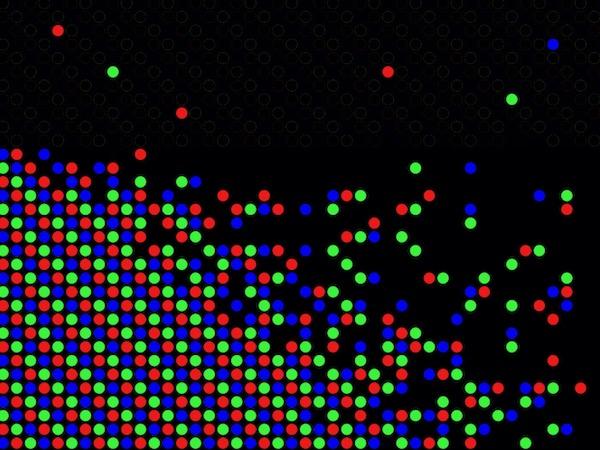TV Tech Explained: What Are Quantum Dots?

"Regarding clinical diagnostics, a highly sensitive photoelectrochemical immunosensor for an ovarian cancer biomarker, CA125, was demonstrated using SiO2@polydopamine core–shell nanoparticles and CdTe QDS. Detection of carcinoembryonic antigen and monitoring of the T4 polynucleotide kinase activity were demonstrated using Mn:ZnCdS@ZnS and CdTe QDs on SiO2 microspheres. Functionalized CdSe/CdS/ZnS core–shell–shell QDs and terbium-labeled antibodies were demonstrated as adenosine diphosphate sensors using Förster resonance energy-transfer processes."
I hope that the following explanation of quantum dots, as used in video displays, will be a bit less intimidating!
TV makers have been offering flagship TVs using Quantum Dots since 2014. Samsung even refers to some of their sets as QLEDs, sowing no end of confusion among consumers who thought (and might still believe) that QLEDs and OLEDs must be very much the same apart from that insignificant little squiggle. But they're not the same. The QLED sets (still prominent in Samsung's product range) don't use OLEDs at all.
LCD or LED sets always struggle to excel in their black levels. The LCDs or LEDs that provide their illumination is always on and not perfectly blocked off when gray (or full black) is demanded by the source on specific areas (or all) of the screen. This problem was dramatically reduced by the development of local dimming, which divides the screen lighting into individually dimmable zones. The number of such zones can range from double digits to hundreds, largely depending on the price of the set (the cheapest LCD sets often don't have local dimming all). The development of mini-LEDs has also moved the number of possible dimming zones into the thousands on flagship TVs. But even then a significant compromise remains. When dim or dark areas are demanded by the source, the light from the lit zones can still spill over into the darker ones. The most prominent example of this would be where a bright image is directly adjacent to a black letterbox bar.
OLED televisions differ from QLED or LCD flat panel displays in that the OLED elements function at the individual pixel level and can be shut down completely in areas of an image that demand true blacks. That is, each of the 8,000 pixels in a 4K display can be individually dimmed or brightened, in real time, as needed by the source without affecting adjoining pixels.
But what's the best way to design an OLED TV? In the early 2010s two versions of OLED televisions were introduced. The first used separate red, green, and blue OLED elements to provide a full range of color. Samsung actually developed such a design but it had disadvantages, particularly in peak brightness. I don't recall it being widely marketed, but did see it once at a CES demo. Samsung soon abandoned OLED in favor of its LCD and, later, QLED designs. But Samsung Display's OLED knowledge never grew rusty; they've long been a leading supplier of OLED screens for mobile phones (perhaps an even more lucrative business than home TVs!).
Another way to design an OLED TV is to use white OLEDs together with filters to separate out the needed red, green and blue colors. That ups the brightness significantly, but not without a downside. Such white-light-enhanced OLED displays (sometimes dubbed, in industry insider-speak, WRGBs) can reduce color saturation in bright scenes. This is rarely obvious in normal viewing, though can be more significant with the higher peak brightness demanded by HDR sources. But the tradeoffs have been minimal; few users have ever complained. So up to now all commercial OLED displays, apart from that early Samsung, have used this type of design.
Another way to build an OLED display, not seen commercially until now, is the use of OLEDs combined with red and green quantum dots to produce a full RGB color spectrum without the need for color filters. The all-blue OLEDs not only provide the blue light needed but also energize quantum dots that then produce the red and green. This technique allows for higher brightness compared to WRGB designs (due to the elimination of the WRGB's color filters) and potentially offers purer, more accurate color. In video applications the quantum dots range in size from 2-6 nanometers; 10 nm is about 3,000 times smaller than the width of a human hair. Red-to-green color is produced from the 2-3 nm sizes, red from 5-6 nm.
This type of OLED TV is just coming to market from Sony and Samsung; Samsung Display manufactures the panels and licenses them to Sony and Samsung (Samsung is an independent entity from Samsung Display: don't ask!). Expect this QD-OLED technology to coexist in the market, for a time, with WRGBs. Our finished but not yet published review of one of the first such "QD-OLED" sets indicates that it's a genuine advancement. No sneak peeks here, apart from revealing that its peak white level reached 1,000 nits. Most previous OLEDs have struggled to reach 700 nits, apart from our recently reviewed LG 65G2. The latter is a conventional WRGB, non-QD-OLED but achieved about 925 nits thanks to a back panel heat sink designed to bleed off the heat that keeps most conventional WRGB OLEDs from achieving brightness levels anywhere near that high.





























































